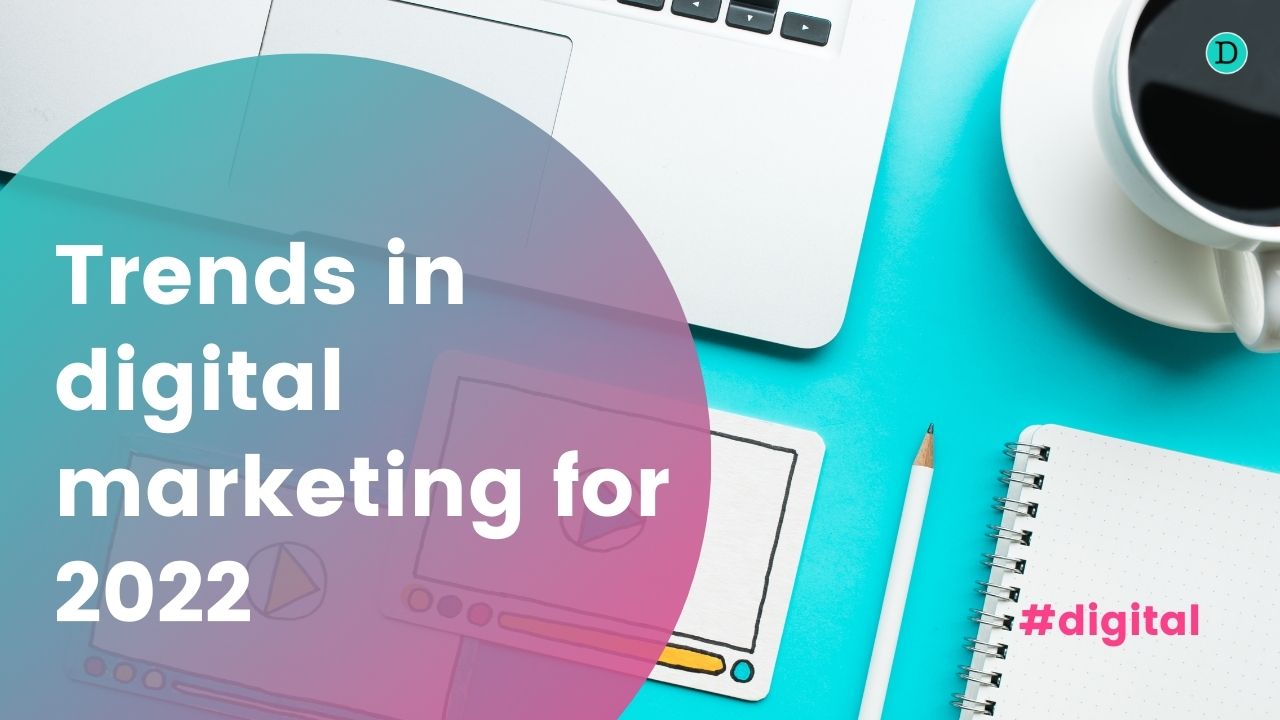
Pablo Herrera
Head of SEO & Content
Making content for SEO is a must for any brand that wants to have an ongoing digital presence in the long term. While digital advertising campaigns can palliate the lack of SEO strategy, if we are looking for something profitable in the long term, organic positioning should be our goal.
By opting for evergreen content, it is possible to have content that is always positioned, bringing traffic and potential customers. In this sense, it is important to define the final objective of this traffic.
Not always it is a question of the more traffic, the better. We may be interested in the amount if our website is based on advertising, but if it is a business it will be very different. In that case, the goal will be to bring qualified traffic that can generate conversions.
In case of being an ecommerce or online store, sales are the main goal. If we are a hotel, bookings then. Maybe a free demo if we are an IT tool or the download of a program if we are a travel agency, for instance.
Maybe what we want is to gain subscribers to our newsletter and then convert them into customers with our email marketing strategy.
What I am trying to say is that SEO content should always be at the service of the business. Not the other way around. It’s not about ranking the most, it’s about getting ROI and improving your numbers.
But, let’s start from the beginning.
What is SEO content?
índice

Perhaps the first thing to do is to define SEO content and how it differs from other types of content.
SEO content is that content designed to appear in the search results of Internet search engines.
In this article we are going to focus on written content, but there is SEO in Youtube, you can do SEO in your podcast for companies, in your images and infographics, etc…
To get listed on Google, the search engine par excellence, you have to follow a series of guidelines that will make it more likely to be selected.
SEO depends on many technical and content factors, as well as user behavior. Some of them, including crucial ones such as what the competition is doing, cannot be controlled, but content can be optimized as much as possible to facilitate the appearance in the SERPs or top search positions.
Unlike advertising on Google or social networks, which offer immediate results, SEO content takes time. It takes at least six months to start getting noticeable results.
On the other hand, and unlike advertising, the results do not require investment to work. They will be there and will continue to work, even if we do nothing.
Obviously, they will be better if we revise and optimize, but the good thing about SEO content is that it has no expiration date.
How to make SEO content?
When making SEO content there are a number of elements to consider. Some of them are technical while others are more related to the elaboration of the content itself.
Of these, keywords, titles, text, links and images are the main ones and will be the ones you develop.
Keywords

Selecting a keyword is the most important thing in SEO content.
The keyword should answer the question: what query do we want to reach the user with?
For example, if we are an online store of ecological footwear, we may be interested in positioning for “ecological footwear”, “ecological footwear Spain”, “where to buy ecological footwear” or variations such as “sustainable shoes”, “sustainable shoes store”, “ecological hiking boots”, etc…
To select the right keyword, several aspects must be taken into account.
On the one hand, the search volume. In other words, the number of monthly queries for that word or set of words. It’s easy, creating SEO content requires resources, both time and money, so the search we focus on must be enough interesting for the investment to be worthwhile.
If no one is looking for eco-friendly shoes, but they are looking for sustainable shoe stores, that’s where you should be. There are different tools such as Google Keyword Planner, SEMrush or Ahrefs that can help you check the volumes of different keywords, as well as see related keywords.
On the other hand, the competition. If you are just starting out, you may want to go for a keyword that has a lower search volume but less competition. It’s like running a marathon, maybe you first have to try to win the marathon of your town before considering the New York marathon.
Finally, you also need to analyze your keywords against each other to avoid cannibalization.
This keyword research process is called keyword research.
Titles

Titles or headings are also very important. In a SEO content we find two different titles: the title of the article, marked as H1 in the HTML language of the page and the specific title we write for the search engine.
This title can be the same or can be varied to seek a higher CTR, which is, a higher percentage of clicks when the headline and its respective meta-description appear in the search results.
When writing SEO titles it is important that they are descriptive. While for the headline or H1 of the article itself you can get literary if you want (although its relevance is also important for Google), in the one that appears in the search engine it must be clear what is going to be found in the article.
Subheadings

In addition to the title of the article, there are different subheadings that can be used in the text.
In this case, it is used to structure the text and to talk about the different subdivisions of the text. This helps Google to understand which are the second most relevant aspects of the article.
Of course, here we must also use related keywords that we have found in our organic research.
It is important that the subheadings, in H2 and H3, have thematic coherence. An easy example would be this text. The subheading how to make SEO content is a H2 and the different parts of how to do it (keywords, headings, subheadings, text, etc …) are H3 because they are part of that thematic scope.
If I am going to talk about a different topic within the main topic of the article, I would have to go back to H2. In this way, Google understands the internal hierarchy of the content.
Likewise, it is not recommended to use headings below the H3 such as H4, H5, etc…
An aid to write SEO content is to first make the structure of the content with SEO title, H1, H2 and H3 and then fill in the different parts. Of course, keeping the thematic and stylistic coherence and not as separate aspects.
Text

Text is the most important aspect of any SEO article. It is the basis of everything. If your text doesn’t work, neither the technique nor the headings nor the links or the images will be of any use.
It’s easy to understand. Google wants users to find what they are looking for. That is the basis of your business.
If you promote your text to the top positions and the user does not find what they are looking for, your service fails.
That’s why user behavior is so important to Google. That’s what dwell time and pogo sticking is all about. Dwell time is how long a user stays on a page, while pogo sticking is whether after entering the page they return to the search results and enter a different page.
If you do this, it means that you have not found what you were looking for. That will cause Google to penalize you. It is simple logic, like everything in organic positioning.
That’s why, when it comes to SEO copywriting, it is essential to answer to the user’s search intention. That’s the main key.
Once we do that, we can enrich the strategy by working on headings, photos, links, etc… But without the first part, none of this is going to work.
In addition, we cannot forget to use semantic fields. The more related vocabulary we use, the more we will be able to position ourselves as experts in that topic. Don’t repeat keywords like a parrot, look for synonyms and as many related words as you can.
Links

When I talk about links and linkbuilding with clients, I always use the same comparison. Links work exactly like the bibliography of an academic paper.
And, like the bibliography, there are more prestigious and less prestigious options.
A common mistake is to think that putting an external link to our website harms us. It does not.
Continuing with the example, when you talk about an academic concept citing a work of the author who invented that concept, your work does not lose value, but is revalued.
The fact that you link to pages related to the content and that they are relevant to Google, indicates to Google that you know what you are talking about.
You know what you are talking about because your reference to say that, is the same reference for Google. Of course, not just any link will do. You have to look for pages with important domain authority and whose content is related to the topic of the article we are talking about.
Media or pages like Wikipedia also work very well when it comes to linking. Each link that we make externally also helps those pages to maintain their position as a reference in what is known as link juice.
This must be taken into account when carrying out the linkbuilding strategy.
Although it is not strictly SEO content work, but SEO, the correct use of internal links will also help to position certain pages, and there are different structures and strategies that we can follow.
In the same way, the text or anchor text that links to that page will also be something very relevant to take into account in the SEO strategy.
Images

Images also require SEO work. Both technical and editorial aspects must be taken into account.
The technical aspects are not the focus of this article, but they are worth remembering: adequate size without excessive weight that slows down the web and optimized format for the page.
Regarding editorials, it should be noted that images are part of the content. Therefore, beyond lightening the vision in long texts, it is important that they are related to the topic.
Likewise, they must have a descriptive title of the image, as well as have their ALT tag filled in, explaining what appears in the image.
It is especially important in the case of infographics. Infographics work very well in Google and can be another way of branding and even get conversions.
Images also require SEO work. Both technical and editorial aspects must be taken into account.
Other technical aspects

Beyond the aspects related to the content, we cannot forget that there are technical aspects that have a strong influence on it. For example, design aspects, the typographies used or web usability, will make the content more or less easy to read and will affect user behavior.
The same applies if the page does not adapt well to mobile devices or if it has pop-up banners that make reading difficult. Anything that stands in the way of a user finding what they need when they click on a search result will work against us.
There are also other elements to take into account such as the speed of the site, the server we are using, the security protocol, etc… Aspects such as clearing the WordPress cache can also help us to have a better performance.
In short, positioning in Google is a sum of many aspects and we must take them all into account, especially at a time when competition is fierce. However, we cannot forget the most important thing: writing content that meets the user’s needs.
From there, we add up.


